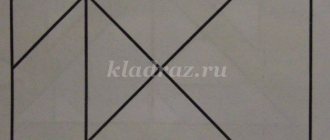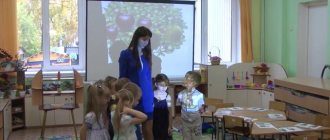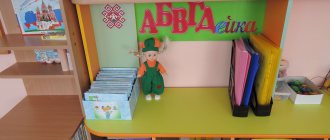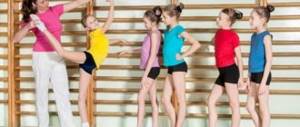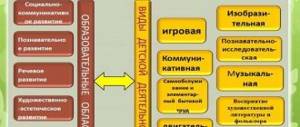“Methods and techniques of working with children with disabilities” material
“Methods and techniques for working with children with disabilities”
(speech at a meeting of the Laboratory for newly arrived teaching staff and young specialists)
31.08.2019
This year many new teaching staff have joined our team. And this meeting of ours is due to the need to orient young specialists and newly arrived teachers and specialists in working with children with disabilities and children with disabilities.
Currently in Russia the number of children with congenital and hereditary diseases is steadily growing. In this regard, the urgency of the problem of pedagogical assistance and education of this group of children, including children with disabilities, has increased more than ever before. You and I, like no one else, feel this to the fullest. After each meeting of the PMPC, the contingent of our educational institution is replenished, mainly with children in need of individual education at home. There were 127 such children last school year. The hardest homeworking children.
The health status of children with developmental disabilities prevents them from mastering educational programs outside of special conditions of education and upbringing. Due to physical or mental defects, they have certain impairments in the reception, processing and use of information received from the world around them. Therefore, they need a special individual approach, different from the framework of a standard comprehensive school.
The key point of this situation is that children with disabilities do not adapt to the rules and conditions of society, but are included in life on their own terms, which society must take into account and accept; this is the main meaning of inclusive education.
Children with disabilities are developmentally focused on acquiring social experience. Their path to socialization differs from the generally accepted one. Mental and physical disabilities change and aggravate the development process, each disorder in its own way. Therefore, each child must be approached strictly individually when choosing a path of development and education.
The Constitution of the Russian Federation and the Law “On Education” state that children with developmental problems have equal rights to education as everyone else. And our task is to provide such conditions for the education and upbringing of a child with disabilities that are aimed at correcting his inherent deficiencies, promoting his overall development and socialization.
Children with disabilities are characterized by a number of features.
The development of mental processes: thinking, memory, attention, perception, speech, the emotional-volitional sphere of personality in children with developmental anomalies occurs slowly and lags behind the norm. Limitations of mental and cognitive capabilities do not allow the child to successfully cope with the tasks and demands that society places on him. As a rule, all these restrictions are clearly manifested and noticed by adults for the first time when the child comes to school. For such children, play activities remain dominant for much longer (often throughout all years of primary school), and learning interests and skills are formed with difficulty and to a lesser extent. A poorly developed voluntary sphere (the ability to concentrate, switch attention, perseverance, the ability to hold a task in memory, work according to a model) does not allow a junior schoolchild to fully carry out intense educational activities: he gets tired very quickly, becomes exhausted, and loses interest in classes. Due to the insufficient ability for his age to compare, generalize, abstract, and classify, the student is not able to independently, without special psychological and pedagogical assistance, master the minimum content of the school curriculum. Due to the functional immaturity of the nervous system, the processes of inhibition and excitation in such children are poorly balanced; the child is either excitable, impulsive, aggressive, irritable, constantly conflicts with classmates, or, on the contrary, constrained, inhibited, fearful, whiny and anxious. These children very quickly fall into the ranks of the chronically underachieving. The teacher has a question: how to teach such a child? How to take into account the health characteristics of each individual child?
The group of schoolchildren with disabilities is extremely heterogeneous. This is determined primarily by the fact that it includes children with various developmental disorders: impaired hearing, vision, speech, musculoskeletal system, intelligence, with severe disorders of the emotional-volitional sphere, with delayed and complex developmental disorders.
Our school educates children with intellectual disabilities and mental retardation who have concomitant diseases. Teachers need to understand: these children have irreversible developmental disorders and will never be able to catch up with their peers, therefore, to a greater extent, their education should be aimed at developing their life competence for adaptation in society. Our respected teachers with many years of experience have extensive experience with such children: Sharapova M.Ya., Shubova L.S., Fedotova V.I. I would advise new teachers to visit their classes with very difficult children, and I would also like to thank them for their kindness, humanity and patience.
At the moment, there are many traditional and non-traditional methods that allow solving a complex of tasks and problems facing a teacher to whom a child with disabilities has come to study. The set of teaching methods is a way of understanding the surrounding reality that is offered to children. The path that determines the nature of mental development, realizes the possibilities of acquiring knowledge, and forms the personality traits of the student. At school and in individual lessons, teachers work with children with disabilities throughout all stages of the lesson (explaining new material, completing assignments, assessing the student’s work). And at each stage of the lesson certain methods and techniques can be used.
Taking into account the characteristics of children with intellectual disabilities, the teacher uses the following methods to achieve goals and objectives:
- methods used to communicate new knowledge are methods of explanation, story, demonstration;
- methods used in acquiring new knowledge, skills and abilities;
- conversation, observations, work with a book, games, exercises, laboratory and practical work, independent work - the use of methods in this group allows you to intensify the cognitive activity of schoolchildren and increase their independence;
- methods of working with technical teaching aids: multimedia presentations, watching video lessons, etc.
Let us give a brief description of some teaching methods.
A story is a form of presentation of educational material, which is a verbal description of events, facts, processes, phenomena in nature and society, in the life of an individual or group of people.
The requirements for the story are:
— certainty of topic and content (it is better remembered and easier to digest);
- clarity of structure (must have a clear structure: beginning, development of events, climax, ending);
— emotionality (connection of the story with the student’s personal experience, with local conditions, events).
Explanation is a method of mastering theoretical educational material. Feature – theoretical evidence that suggests:
— setting a cognitive task;
-strict, careful selection of factual material;
— a certain form of reasoning: analysis and synthesis; observations and conclusions; induction and deduction;
-use of illustrative material;
- formulation of conclusions.
Conversation is a teaching method that is a question-and-answer form of mastering educational material. The main requirement is a strict system of thoughtful questions and expected answers from students. Questions should be interconnected, subordinate to the main idea, and posed in such a way that students understand the subject of the conversation.
Students' work with a textbook or book is one of the most effective methods of mastering educational material. The skills and abilities to work with books developed in school last a lifetime.
Requirements: - each student must be able to find the place that is being studied;
- the teacher must give brief and clear instructions on how to complete the task;
- students should find the main thing in the process of working with the book, strong points, without trying to remember everything.
The use of the demonstration method makes it possible to work on developing a range of elementary concepts in students and sets as its goal, on the one hand, the enrichment and systematization of children’s experience, on the other hand, it teaches them to observe an object, a phenomenon, highlight the main features in them, compare, generalize, establish one's relationship to the object.
Observations and laboratory work. The main goal is to develop students’ independent work skills and their observation skills.
Excursions are one of the most common teaching methods. Its value lies in the fact that children learn to observe natural objects in real, natural conditions. Excursions have general educational and special educational significance.
A practical method is the use of games, entertaining exercises, and competitions.
Thus, in a correctional school, the same teaching methods are used as in any other general education school, but in their practical application, the cognitive capabilities of children with impaired intelligence are taken into account.
The most significant feature that distinguishes the teaching methods used in a correctional school from the methods used in a mass school is their correctional and developmental orientation.
It includes:
- Submitting educational material to each lesson in small portions;
- Maximum expansion and fragmentation of complex concepts and actions;
- Slowness of learning and frequent repetition of formulated actions;
- Preliminary propaedeutics for learning new things;
- Constant reliance on students’ sensory experience;
- Guiding the actions of students up to their joint implementation by the teacher and student, etc.
As already stated, children with disabilities represent a very diverse group of learners. Therefore, the priority in working with such children is an individual approach, taking into account the health status of each child. And contact with their parents (legal representatives) is very important; it is important to know all the features of the child’s development.
General pedagogical methods and techniques are not used in isolation, only in the necessary combination. When using one or another method, as a leader, it must be supported by one or two additional ones. For example: at the initial stages of training, the leading method can be visual and practical, and it can be supplemented by conversation.
Next, conversation becomes the leading method, and visual and practical method becomes an additional one.
Our students cannot absorb a large amount of material at the same time. And you must clearly understand that the return will be minimal, because you are working with special children and, due to their physical and mental characteristics, they cannot master the program on an equal basis with ordinary children. Therefore, it is necessary to split the educational material into small parts. Educational material communicated only in verbal form, not supported by visual or practical actions, is poorly understood by schoolchildren and is not remembered, so it is important to combine these methods. Schoolchildren form connections between verbal and visual components with great difficulty and require special methodological techniques to ensure this connection. Thus, the teacher’s oral presentation should be combined with the display of visual aids, graphic and illustrative works, reinforced by frequent repetitions, independent work and exercises aimed at developing student activity. Example: in reading and speech development lessons, the teacher often uses the illustration method; children remember the work more easily if they have drawn the main characters or an event from the text.
The value of a particular method is achieved only if it:
a) leads not only to the assimilation of knowledge and methods of action, but also ensures proper education and general development of schoolchildren;
b) makes learning as accessible and feasible for students as possible, taking into account their cognitive capabilities at various age stages, while providing conditions for schoolchildren to practice in overcoming obstacles and difficulties necessary for the development of their moral and volitional qualities and creative activity;
c) ensures a high level of consciousness and strength in mastering educational material;
d) leads to the assimilation of knowledge in a certain system, to the formation of skills and habits of systematic work on independent acquisition of knowledge;
e) provides an opportunity to take into account the individual characteristics of students, a rational combination of frontal and individual work;
f) promotes maximum activation of schoolchildren’s educational activities.
The combination of various methods is also of considerable importance, which depends not only on the nature and content of the academic discipline, didactic tasks, and the preparedness of students, but also on the composition of the class. For example, some students are helped to successfully retell by using a conversation and an illustrative block, others tell better and more fully based on a verbal plan, and still others need a combination of an illustrative block, a conversation on what they read, and reading excerpts from the text.
Among students with special educational needs (especially among primary school students), there are a large number of children with various speech defects. And although a speech therapist is working to correct these defects, this does not detract from the role of the teacher. Every teacher needs to work on the expressiveness of their speech. When working with children who have speech problems, you yourself need to be able to read and tell stories expressively, and speak expressively. With his intonation, the teacher emphasizes the originality of the material being presented, making it accessible to students.
The mastery of educational material is determined by the pace of the teacher’s speech. If the teacher speaks quickly, then the child’s thoughts cannot keep up with the teacher’s speech, attention quickly decreases, and performance declines. The student no longer listens or hears anything, he switches off from work.
The pace of a teacher’s speech is of great importance in all years of study, but it is of absolutely exceptional importance in classes in the lower grades. Calm, even, but not devoid of emotional coloring, the teacher’s speech gives a great pedagogical effect. It should be simple in structure, understandable to students and laconic. Such requirements are imposed on teacher speech because, in the context of teaching children with disabilities, it is a means of correcting students’ thinking.
The successful organization of a lesson in a correctional school where children with disabilities are taught depends on many factors: the teacher’s good knowledge of the capabilities of each student, ensuring a gentle and protective regime, taking into account the personal and individual characteristics of each student. But the lesson also depends on the mood, which begins from the very moment when our students first cross the threshold of the classroom. Children who study in our schools are mostly driven, they tend to imitate; therefore, notations and conversations are in most cases useless; they, like a mirror, reflect the emotional mood of the teacher himself.
Any lesson is, first of all, communication. A correctional and developmental lesson must be structured in such a way that it is interesting for children to communicate with the teacher, while simultaneously learning something new, consolidating the material they have learned, and applying knowledge in new conditions. The peculiarity of organizing work with children with intellectual disabilities is that the correctional and developmental focus of the lesson is not just one moment or type of work, but the entire lesson, its content, psychological atmosphere and kind attitude towards each other. Let the children work each at their own pace, each taking into account their capabilities and come to general conclusions and results by the end of the lesson. The most productive form of work in the classroom, both in the lower grades and in the middle and senior levels, is collective. When schoolchildren have the opportunity, with the help of the teacher, to discuss some issue or task together.
To implement some of the above teaching methods, it is necessary to have a sufficiently high level of development in students of the ability to use the information provided to them, the ability to independently look for ways to solve a given problem; Not all students with disabilities have such skills, which means they need additional help from specialists: a teacher-defectologist, a teacher-speech therapist and a teacher-psychologist. It is possible to increase the degree of independence of students with disabilities, and especially children with mental retardation, and to introduce into teaching tasks based on elements of creative or search activity only very gradually, when children already have some experience in such work. Therefore, the following methods will be most acceptable here:
- explanatory-illustrative;
- reproductive;
- partially search;
- communicative;
- information and communication;
- project method;
- control methods;
- self-control and mutual control.
Teaching techniques used in lessons with students with special needs. The concept of “teaching technique” is closely related to the concept of method.
Teaching techniques are specific operations of interaction between teacher and student in the process of implementing teaching methods.
To enhance the activities of students with disabilities, the following teaching methods can be used:
Using signal cards when completing tasks (on one side it shows a plus, on the other - a minus; circles of different colors according to sounds, “emoticons”). Children complete the task or evaluate its correctness. Cards can be used when studying any topic to test students' knowledge and identify gaps in the material covered. Their convenience and effectiveness lie in the fact that the work of each child is immediately visible.
Using magnetic letters, words when completing a task, solving a crossword puzzle, etc. Children really like the competitive moment during this type of task, because in order to attach their card to the board, they need to answer the question correctly, or complete the proposed task is better than others.
Compiling, recording and posting on the board the main points of studying the topic, conclusions that need to be remembered. This technique can be used at the end of studying a topic - to consolidate and summarize; during the study of the material - to provide assistance in completing assignments.
Perception of material at a certain stage of the lesson with eyes closed is used to develop auditory perception, attention and memory; switching the emotional state of children during the lesson; to get children in the mood for a lesson after vigorous activity (after a physical education lesson), after completing a task of increased difficulty, etc.
Use of presentations and fragments of presentations during the lesson, simulators for eye gymnastics. You can place the necessary educational material, color photographs, texts on the slides; You can add music and voice accompaniment to your presentation. With this organization of material, three types of children’s memory are included: visual, auditory, motor. Thanks to the sequential appearance of images on the screen, children are able to complete the exercises more carefully and fully. The use of animation and surprise moments makes the correction process interesting and expressive.
Using picture material to change the type of activity during the lesson, develop visual perception, attention and memory, activate vocabulary, develop coherent speech.
All of the above methods and techniques for organizing training, to one degree or another, stimulate the cognitive activity of students with disabilities.
Using the entire variety of existing teaching methods and techniques allows the teacher to alternate different types of work, which is also an effective means of enhancing learning. Switching from one type of activity to another protects against overwork, and at the same time does not allow one to be distracted from the material being studied, and also ensures its perception from different angles.
By combining appropriately selected content, methods and forms of educational organization, a teacher can stimulate various components of educational and correctional development activities for children with special educational needs.
“Correctional classes for the development of speech of children with disabilities in primary school”
Speech impairment and its correction in children with disabilities is a theoretical and practical problem.
Timely development of speech function is the most important prerequisite for the mental development and adaptation of children in society at all stages of its development. Speech underdevelopment is a complex secondary disorder that covers all its aspects. Inferior speech development also leaves its mark on the formation of non-speech mental processes.
The success and effectiveness of teaching this group of students largely depends on the choice of correctional programs, methods and techniques that are optimal for the development of a child with disabilities, teaching methods and techniques in accordance with his special educational needs, and the implementation of an individual and differentiated approach.
Corrective work programs in accordance with the Federal State Educational Standard LLC, aimed at creating a system of comprehensive assistance to children with disabilities in mastering the adapted basic educational program of general education, correcting deficiencies in the physical and mental development of students, nurturing a personality capable of adapting to modern society and successfully realizing their cognitive and social needs.
I would like to share my work experience and talk about correctional and developmental classes on speech development in primary school (using the example of the curriculum “Speech Practice” for 2nd grade students). The program material of this course is designed to correct the problems of speech development of children, give them practical speech training, develop and enrich the student’s understanding of the world around them, increase the level of their overall development, teach them to read meaningfully, write competently, and express their thoughts coherently. With mental retardation, burdened by a general underdevelopment of speech, students have deviations in the formation of all components of the speech system: the phonetic-phonemic side of speech, vocabulary, grammatical structure, so schoolchildren in this group experience great difficulties in independently constructing statements, distributing phrases, stories, messages. Each student has his own vocabulary, very different from the vocabulary of others. The words used are spoken sincerely and are not always used correctly. Students try to change words by gender, number, case, person, tense, but their attempts are often unsuccessful. There are gross deficiencies in the pronunciation of sounds and syllabic structure of even two-syllable words. Hence the lack of readiness to master sound analysis and word synthesis. It is no less difficult for them to retell what they have read or heard. Their conversational speech turns out to be poor, laconic, and closely related to a specific situation. The development of descriptive and narrative speech occurs very slowly during the learning process. Coherent speech is the foundation for the full formation of written speech. And if written speech is built on a defective foundation of oral speech, then this leads to a serious obstacle in students’ mastery of the school curriculum.
